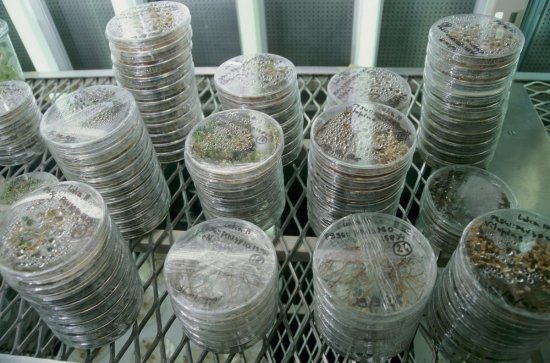
© Frédérique ROZIER / RDP / CNRS Images
Reference
20170133_0002
Double pollinisation d'une Arabette des dames
Double fertilisation in thale cress, arabidopsis thaliana, observed using fluorescence confocal microscopy. The surface of the female reproductive organ, the stigma, (coloured using GFP, a fluorescent protein that marks the cytoskeleton of actin in green), receives two types of pollen grains. Blue-coloured grains (marked with CFP fluorescent protein), which are compatible as they are from a different flower to the pistil, and red-coloured grains (RFP protein), which are incompatible as they come from the same flower as the pistil. The blue grains are accepted and put out a tube that carries the male gametes to the ovules, whereas the red grains are rejected. Despite encountering hundreds of grains of pollen, the female reproductive organs of plants are able to choose their male partners very quickly. In the case of brassicas (the group that includes cabbages, radishes, rockcress, etc.), this choice depends on a lock-and-key type interaction, the key (a peptide) being introduced by the pollen whereas the lock (a membrane-associated kinase receptor) is present on the plasma membrane of the stigma cells. If the key and the lock are genetically related (being brother and sister, for example), the lock-and-key interaction prompts the stigma to reject the pollen. This mechanism enables the plant to avoid inbreeding.
The use of media visible on the CNRS Images Platform can be granted on request. Any reproduction or representation is forbidden without prior authorization from CNRS Images (except for resources under Creative Commons license).
No modification of an image may be made without the prior consent of CNRS Images.
No use of an image for advertising purposes or distribution to a third party may be made without the prior agreement of CNRS Images.
For more information, please consult our general conditions















